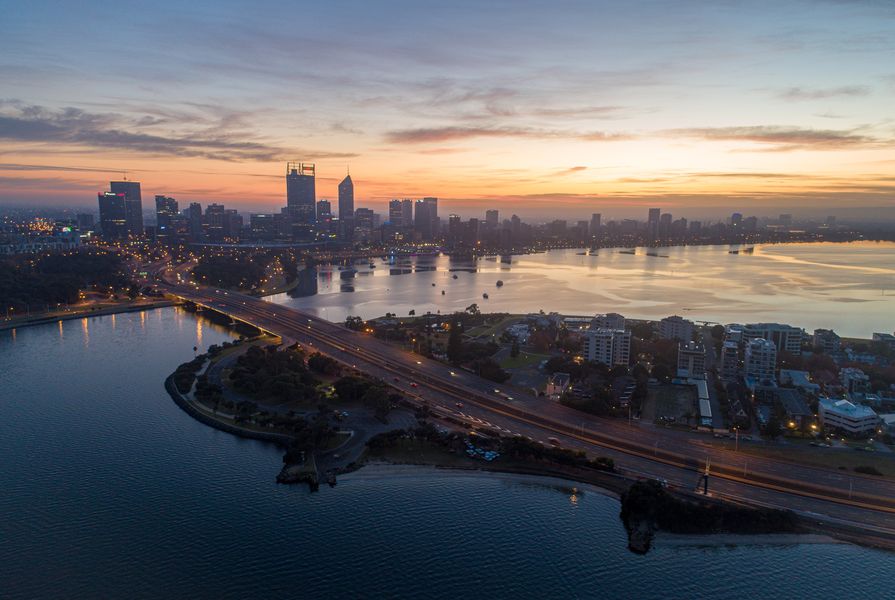Alanna King: For me, the central design issues of our time relate to urban and climate challenges. Do you think architects have agency here?
Roderick Simpson: In my view, climate change and other environmental challenges are best addressed through top-down policies and regulations; the “crises” in Australian cities now need bottom-up initiatives.
Crises occur when the system isn’t working – business-as-usual is not enough, business-as-usual is what got us into the mess. So, for architecture, the question becomes “How should practice change?” rather than “What can architecture do?”
Both climate and urban crises are political issues, not design problems. And when I say political, I mean that for architects to be effective, we need to change the operating conditions we work in – and that is a political task.
AK: How exactly? Here we are in the critical decade for climate action. What can architects do to effect change, and what do we need to do differently?
RS: The first thing is to recognize our role as intermediaries. We do not define the conditions in which we operate, we do not decide what sort of building goes where, and we have only limited control over the amount and type of materials.
As a profession, we may think that we don’t get sufficient respect or recognition, and consequently do not have as much influence or agency as we deserve. But expending a lot of our energy attempting to rectify this is a very ineffective and roundabout way of addressing these pressing existential challenges.
Instead, we need to engage in political activism on the one hand and re-engage with community on the other. This is what I mean by a “top-down” approach to address climate change and a “bottom-up” approach for urban issues.
AK: What do you think we need to do differently in practice to effect systems change in our sector?
RS: Since the 1970s, there has been so much talk about promoting green practices and community education. [But] the idea of consumer choices driving change at the scale and in the time we have is delusional.
Architects need to be clear that we need action upstream. We require green hydrogen steel, solar-powered electric furnaces for aluminium production and sustainably grown timber.
Sustainable material production is a supply-side issue, not a demand-side issue. We should not accept the compliance costs of box-ticking and reporting, or accept responsibility for something over which we have very limited control.
Market innovation has always been solely about being more competitive – by offering either higher quality or lower cost – not about the public interest. We should be advocating for supply- side regulation to inform the market about what is required; then and only then will the efficiencies of the competitive market innovate to achieve industry-wide transformation. The time for voluntary systems has well and truly run out.
The worst thing we can do is give the impression of an effective response without achieving the real change needed. Architects risk being co-opted by vested interests who are very adept at greenwashing and distraction.
AK: Let’s talk about how urban issues are different. Why do you think they should be addressed from a grassroots level?
RS: There is now a broad community consensus and support for what needs to be done to address climate change. The shift from fossil fuels will impact a few communities, whom we can help to transition, and large corporations who, although very powerful, are also very few. In contrast, as city dwellers, we all feel the pressures of increased traffic, higher land values, lagging social infrastructure. Urban policy is imposed from above without community understanding or acceptance. Without political legitimacy, this is the “urban crisis” in Australian cities.
Compared to most of the world, Australia has good infrastructure, planning and delivery systems. Every day, the city works: a miracle! But that dependability comes at the cost of the agency of the individual. In virtually all urban architecture, connection with the public has been severed.
The only way to re-establish legitimacy and restore public trust is through proper participatory practices. These would benefit from architects’ ability to deal with a wide range of considerations, differing desires and restrictions, and to develop a coherent, convincing proposition.
This should be an integral part of paid architectural practice, not just pro bono advocacy.
AK: I’ve been involved in several interesting early stages of project genesis here in Canberra for the state government. One took a participatory approach to defining the brief. Over a couple of weekends, a community panel developed an understanding of the site and relevant contextual issues. We facilitated the drafting of a community brief, which went out as part of the tender package, with a requirement that the developer report back to the panel at later stages. The deliberative process received a commendation from the Planning Institute of Australia. I loved it as a briefing process, but it’s often not considered part of the design process at all.
RS: That sounds like a recognition by government that participatory processes are appropriate and actually very useful. They go beyond simply assuaging people’s concerns, to understanding that planning must involve the local community directly and with effect. This is where architectural practice needs to shift.
Each jurisdiction has a different culture and ethos, which extends to architecture, planning and urban design. The deep cultures of our cities are different, and therefore so is the nature of our design disciplines. For example, urban design is quite different from one city to another in Australia – more related to planning in one city, to landscape architecture in another and to architecture in another.
So, it is not surprising to hear about these Canberra examples. The Griffins entered the design competition for Canberra because they saw the opportunity for the city to become a guiding light for the democratization of processes in the twentieth century and for the lay- out to be the physical expression of new power relations. It might sound obscure and abstract, but I do think that that intention persists today in the slightly utopian idealized city-state that is Canberra! It is reasonable to see the processes you have been involved with as a continuation of that utopian thread.
AK: What I see emerging here is the idea that opportunities for agency in an urban context are place-specific and strongly tied to community.
RS: Indeed, but we need to disrupt the normal processes. The rise of the “community independents” at the federal level is a good example. At its most basic level, this is communities self-organizing to define shared values and priorities that are being ignored by the normal political apparatus.
For urban issues, the apparatus is managerialism that is primarily concerned with minimizing risk and avoiding conflict. It is all-pervasive, and has led to the rise of project management, value management, stakeholder management and compliance reporting, which have diminished the agency of architecture in general. These trends have severed architects’ connection to the eventual inhabitants of their buildings as well as their ability to work with community and advocate for the public interest.
Managerialism contains and deflects community upset through consultation processes that constitute neither participation nor empowerment. Workshops and charettes are all too often charades – the decisions have already been made.
It is managerialism that needs to be disrupted. We need alliances with groups that share social and environmental goals to demand public participation – it can’t just come from the professions.
AK: It sounds as though you are optimistic about the role architects can play.
RS: I am, but these are huge tasks! It starts with recognizing the limitations and potential of our profession.
Architectural practice is limited in three ways: physical site boundaries, its intermediate role in material supply chains, and its credibility within the public sphere owing to its perceived elitism. I am not being judgemental, simply stating a fact.
First, architects must first acknowledge that they have little influence over these conditions and that architecture cannot provide solutions to the fundamental economic and political flaws in the system. And second, they must actively reach out to the community and create clients to both reduce the perception of elitism and create effective urban change.



















